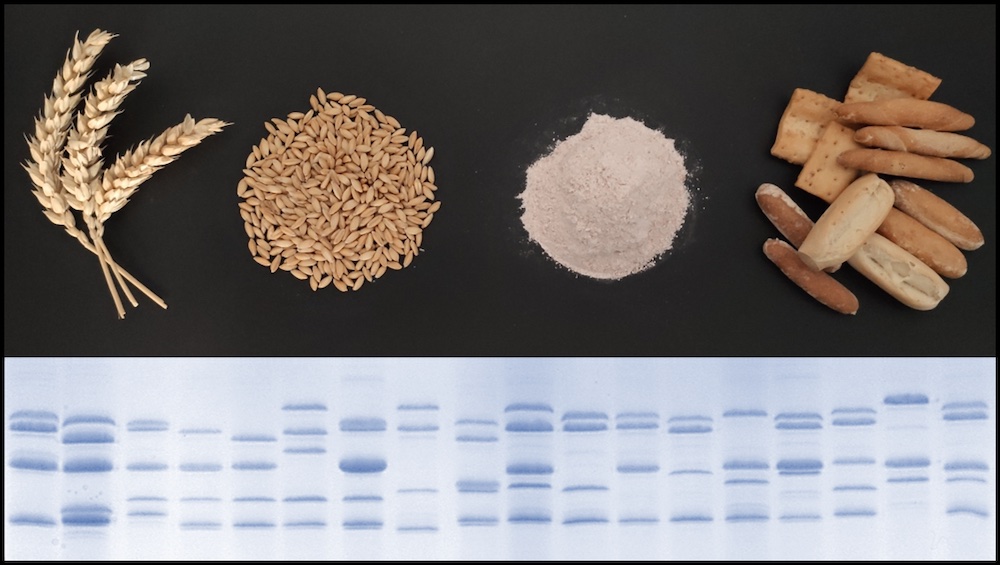
Wheat in its two most important cultivated species (Triticum aestivum L. and Triticum turgidum L.) is the main crop for human consumption worldwide, with an approximate production of 606 million tons. The main line of research of the MGP group arises from the economic and social importance of increasing the functional and nutritional quality of durum and bread wheat varieties.
In wheat, the functional or technological quality of flour lies in its two main components: endosperm proteins and starch. Improving the amount of protein presents difficulties due to its low heritability and its negative correlation with production, which is why the interest of wheat breeders has shifted to the study of the specific composition of grain endosperm proteins: its identification, the knowledge of its variability and the analysis of its relationship with the bakery and semolina quality.
Currently, the main objectives of the MGP research group focus on the study of allelic variability (both in cultivated wheats and wild species) and the genetic control of the HMW and LMW glutenin subunits, as well as their relative influence on the rheological properties. of the dough and the adaptation of the wheats to their final use (Callejo et al 2015; Chacón et al 2018 and 2020; Elyes et al, 2015; Ribeiro et al, 2013). The correct allelic characterization is an essential step for its correct handling and selection in the process of improvement and obtaining new varieties of quality bread and durum wheat, for which one of the objectives is the development of molecular markers for glutenins (Espi et al. al, 2013; 2014).
There is a growing interest in the nutritional quality of wheat, which depends on its composition in a series of elements that have an important impact on health. Studies aimed at obtaining varieties that produce flour with high amylose (related to better functionality of the intestine), or the development of varieties enriched in bioactive compounds, fall within this framework. Under the name of “bioactive compounds” are included those nutrients or non-nutrients (such as vitamins, mineral elements, dietary fiber, phenolic compounds and other compounds capable of acting on the physiological mechanisms of the human body), which provide a benefit for health beyond the considerations of basic nutrition, such as improving physiological functions or reducing the risk of disease. For this reason, within the framework of improving nutritional quality, studies aimed at obtaining varieties enriched in mineral elements such as iron, calcium, manganese and zinc, or with a certain composition in other bioactive hydrocarbon-based compounds, are also framed. , such as dietary fiber, b-glucans and arabinoxylans, or of a phenolic nature (Matallana-González et al. 2021; Ciudad-Mulero et al. 2020; Vázquez et al. 2018).

Funded projects related to this line of research:
Genomic tools and identification of germplasm of interest for improving quality and resistance in wheat. Ministry of Science and Innovation. State R&D Program Oriented to the Challenges of Society (PID2019-109089RB-C32). 2020-2023.
Characterization of local Spanish wheat varieties, identification of molecular markers associated with agronomic characters and selection of germplasm for pre-breeding. Ministry of Economy and Competitiveness (AGL2016-77149-C2-1-P). 2016-2019.
Genetic improvement in common wheat and durum wheat: functional quality, nutritional quality and bioactive compounds. General Directorate of Research. Ministry of Economy and Competitiveness (AGL2012-38345). 2013-2015.
Genetics and improvement of functional and nutritional quality in common wheat and durum wheat. General Directorate of Research. Ministry of Science and Innovation (AGL2009-09980). 2010-2012
Genetics and Quality Improvement in wheat: endosperm proteins, starch and QTLs. (National R&D&I Plan (CICYT) AGL 2006-8025). MEC. 2007-2009

